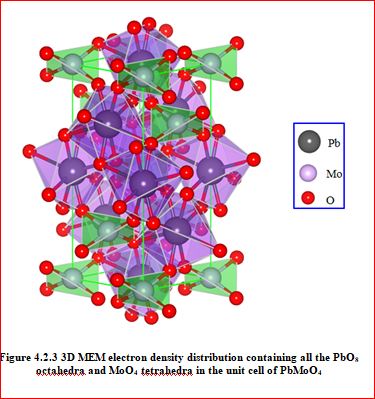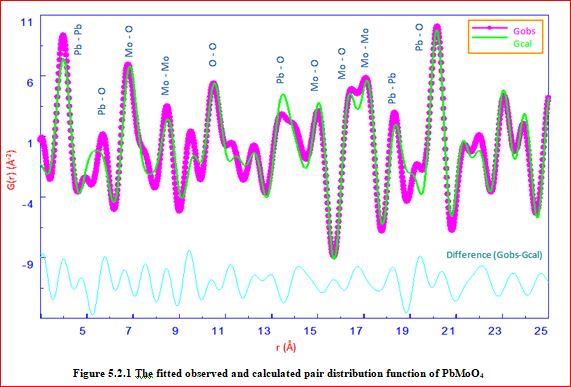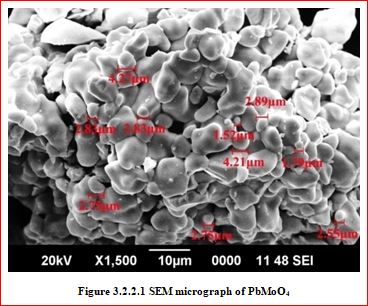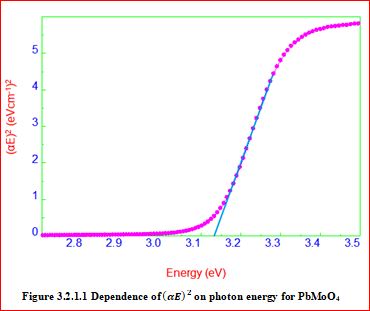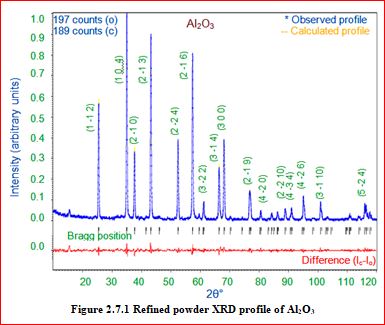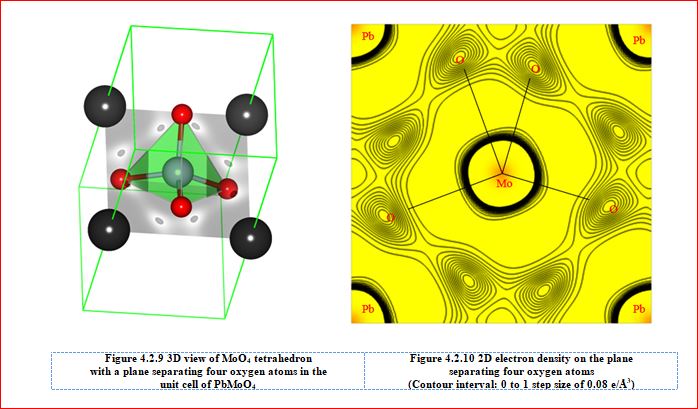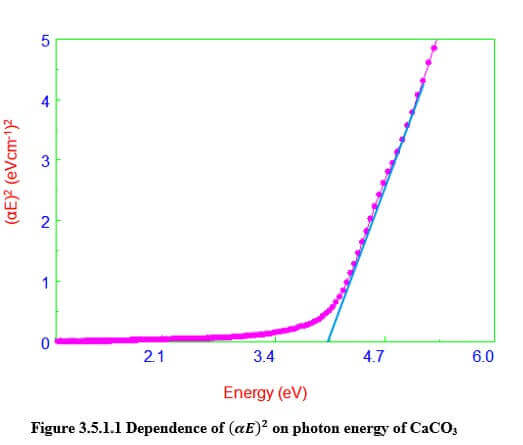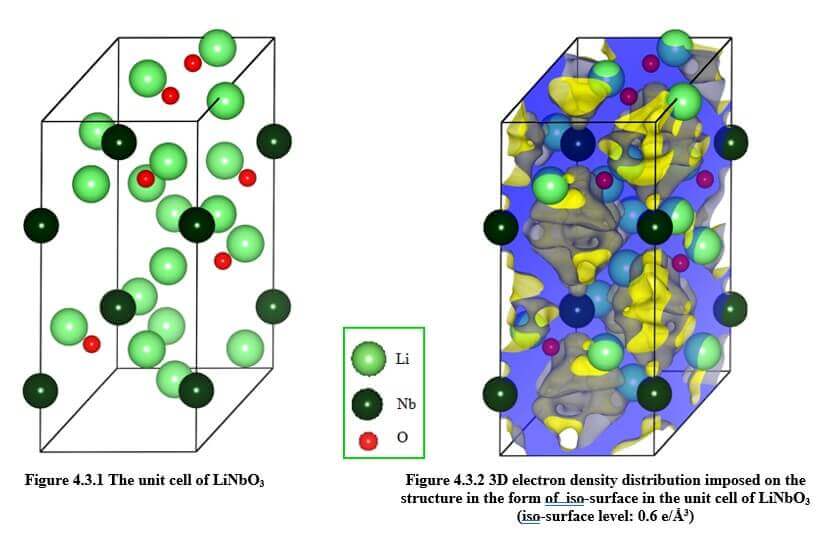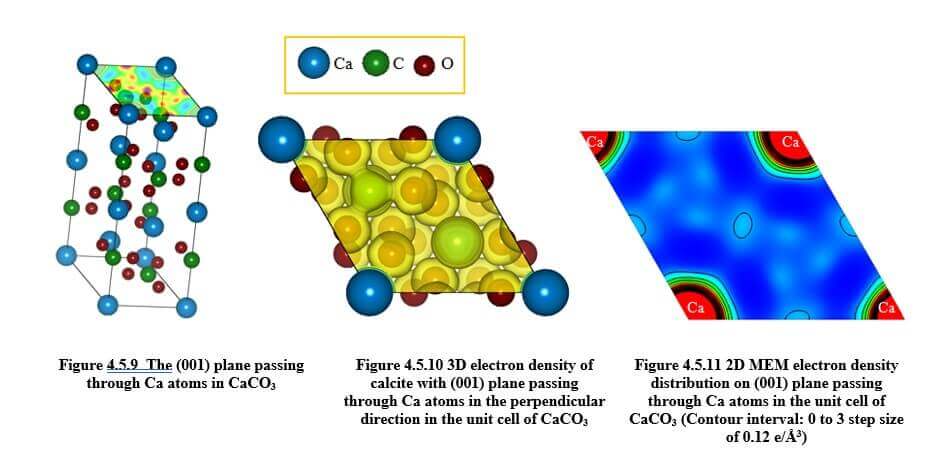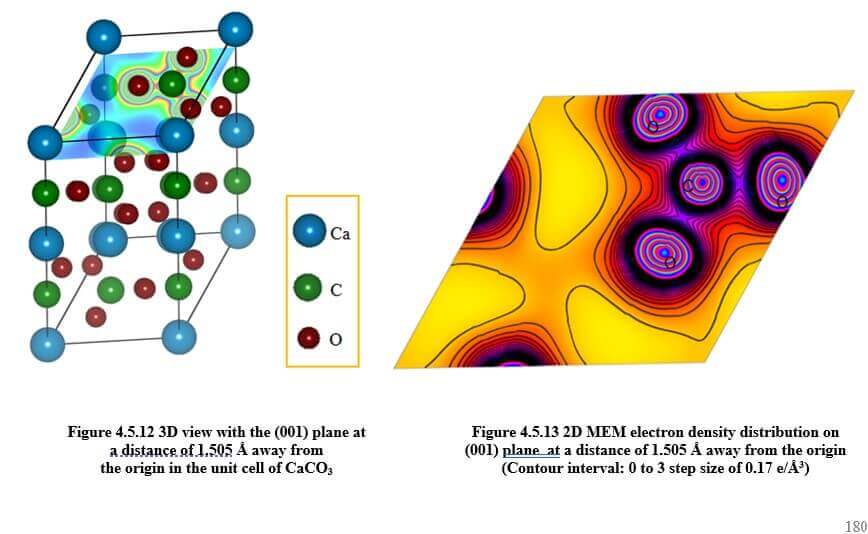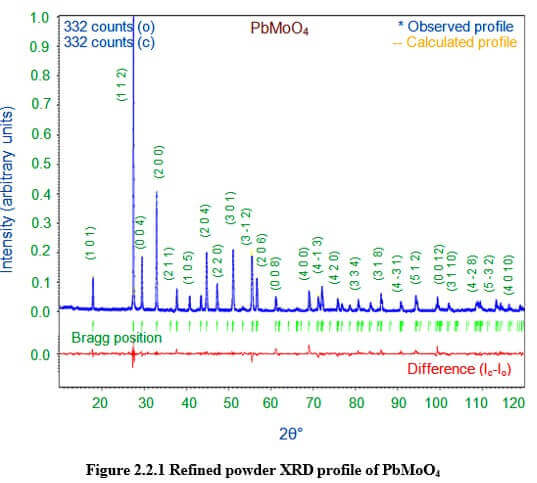Non Linear Optical (NLO) materials
PbMoO4 has been the subject of extensive study because of its potential applications, such as photoconductivity, luminescence, thermo-luminescence and photo catalysis. A study on electron density distribution of PbMoO4 is not available in the literature. Therefore, an attempt has been made in this study to investigate the electron density distribution using the X-ray powder diffraction data.
LiNbO3
Lithium niobate (LiNbO3) is one of the most investigated NLO materials for widespread and promising applications in non-linear optics (e.g., parametric amplification, second-harmonic generation, holographic data storage, and optical information processing). LiNbO3 can be utilized as a high temperature acoustic transducer, such as an accelerometer for jet aircraft because of its high Curie temperature (Tc =1210° C). The existence of threshold effect with regard to magnesium doping level in LiNbO3 single crystal has been confirmed by measuring IR absorption and photoconductivity by. It was reported that the high-speed and low-noise holographic storage with considerate diffraction efficiency has been achieved in LiNbO3 crystal by using two dopants Mg and Fe (i.e., Mg:Fe:LiNbO3). LiNbO3 crystals doped with magnesium might lead to the formation of defects and suppress the optical damage. The holographic storage properties of the LiNbO3 crystal can be greatly improved by doping with ZnO. In spite of the fact that the single crystals of LiNbO3 have several applications, still there are restrictions because of their high cost and difficult fabrication. In our work, an attempt has been made to study the electron density distribution, the bonding between the atoms and local structure of LiNbO3.
Ce doped gadolinium gallium garnet (Ce:Gd3Ga5O12)
The early work on non-linear optical materials showed that gadolinium gallium garnet (Gd3Ga5O12, GGG), is a subject of intense research for the past three decades, because of its interesting properties, such us chemical stability, mechanical hardness, good thermal and optical behavior. It was reported that the GGG single crystals can be used as an appropriate substrate for yttrium iron garnet (YIG) and YIG-like magneto-optical epitaxial film in the field of integrated optics. Neodymium doped GGG single crystal (Nd:GGG) can be regarded as a promising and key material for solid-state high power heat capacity laser. A method to increase the lattice parameters of GGG crystal employing coupled substitution of gallium by magnesium and zirconium, and gadolinium by calcium has been reported. A study on electron density distribution of Ce:Gd3Ga5O12 is not available in the literature. Hence, this material is chosen for the electron density analysis in this work.
Calcite (CaCO3)
Calcite (CaCO3) is one of the most probed NLO materials for widespread and promising applications. It was reported that calcite crystal has strong uniaxial anisotropic nature. Numerous studies are available on the pressure induced phase transition behavior of CaCO3. It was reported that CaCO3 undergo phase transitions from calcite I to calcite II (slightly denser phase), and from calcite II to calcite III (significantly denser phase), at a pressure of 1.44 GPa and 1.77 GPa respectively. It was reported that the above mentioned phase transitions occur at 1.45 GPa and 1.74 GPa respectively at room temperature. It was also reported that the same phase transitions occur at 1.5 GPa and 2.2 GPa respectively. A comprehensive non-destructive methodology for the simultaneous quantitative determination of the calcite crystal phases using the Fourier transform Raman spectroscopy (FT-RS) was reported by Christos and Nikos (2000). The present work on calcite (CaCO3) can be considered as a clear and precise attempt in visualizing the electron density distribution and bonding nature in the unit cell.
Research Materials
PbMoO4
LiNbO3
Ce:Gd3Ga5O12,
CaCO3
Yb:CaF2
Al2O3
Cr:Al2O3
V:Al2O3

